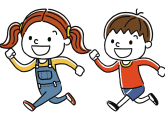If you want to communicate better with your children, find the space to interact on the same level, says Juno Hollyhock…
I had the pleasure of spending some time with a small gaggle of Godchildren at their parents’ home the other day. I was struck by how having a conversation with four youngsters with ages ranging from eight months to 13 years is akin to trying to speak in four different languages all at the same time at some high-level political debate. The room for error is vast and the potential consequences very serious…
The 13-year-old is far too cool for his age and really extremely funny – although to let on would be certain death, so there was the need for diplomatic admiration, plus a healthy dash of avoiding-any-questions-about-school, which just elicit grunts and sideways exasperated face-pulling (so much expression, such a small face!).
The five- and seven-year-olds were both engrossed in some revolting primary-coloured online game that seemed to involve plastic mermaids with improbably coloured tresses swimming around under water, but with no sign of any moving appendages – not even a nod to a jointed arm or tail. What is the world coming to? Bring back Morph, I say.
And the eight-month-old was in non-negotiable mode, not wanting to be held, cuddled or otherwise cooed over, but quite happy if left in peace to pull my toes off and chew on my handbag strap, leaving behind a peculiar mucus that managed to be both sloppy and sticky in equal parts.
Trying to maintain a meaningful interaction with all these lovable creatures was a real challenge. They were perched on tables and chair arms and, in the case of the eight-month-old, firmly secured in a bouncy thing that seemed more bouncy than thing. I knew something was going to have to change when I started calling the 13-year-old ‘poppet’, which resulted in an inward sucking of the lips accompanied by eye rolling and a sort of instinctive reverse hunch, akin to a small cat being inserted into a carrier against its will.
I then capped this by disrupting the online games, causing the five-year-old’s mermaid to be eaten by sharks and the seven-year-old’s to be caught on a fishing line – drawing to an end an apparently uncontested record breaking history of success. A veil shall be drawn over the tears and recriminations that ensued.
Somewhat exhausted by the various interactions I slumped off the sofa and onto the floor, nursing my wounded ego. There is nothing like working in the children’s sector and then failing to engage effectively with real children to make one question one’s purpose in life.
Interestingly, as I moved downwards, the eight-month-old became less interested in my toes – in fairness this was the only part of me he had a chance of engaging with while I sat on the sofa – and reached for my face. The five- and seven-year-olds, having had their interaction effectively withdrawn, did that cling-on thing and came and slumped next to me, one each side, leaning in. The 13-year-old, finding himself in the pleasing position of being taller than me now, became gracious and magnanimous, and kindly untangled his baby brother from my hair.
With all of us being more on a level, there was much better eye contact, and somehow we were able to have one conversation sitting around with each other; we could slump down or sit up as we wanted (or in baby’s case, lie on our back flapping randomly like a beached seal). We played with some stuff that was lying around, screens were forgotten. We interacted as a group of five not as one trying desperately to draw individual lines of engagement with four others, and we had fun. We also touched more – played with baby, communicated more through gesture and facial expression, and enjoyed the added dimension to our conversation and our imagination.
I wonder sometimes if the barriers of tables and chairs, and even beanbags in home corners, can get in the way and make communication with young ones more challenging, especially when there is more than one. Maybe this also applies to adults… who knows?
Juno is former executive director of Learning through Landscapes, which offers a range of services to support outdoor learning and play in the early years. Its membership resources and publications provide a regular supply of fresh activity ideas, and it offers on-site support through advisory visits and half-day, full-day or twilight training sessions for nurseries.

What did Early Years settings learn from lockdown?
Editors picks
